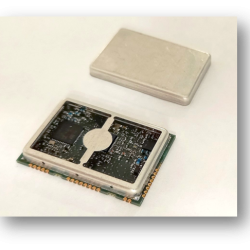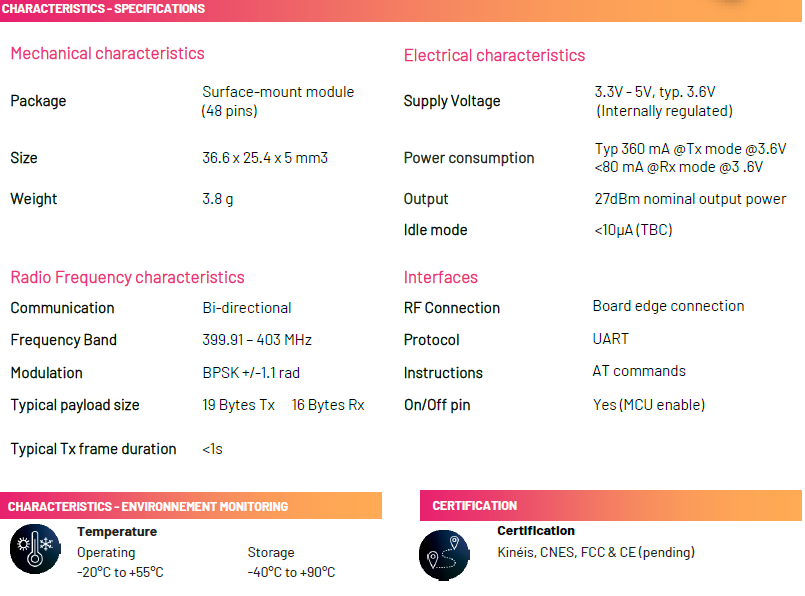- Home
- /
- Argos Solutions
- /
- Argos Products
- /
- Modems & Hardware
- /
- KIM2 Kinéis Module
ARGOS Products
KIM2 Module BY Kinéis
KIM2 is a low-power transmitter+receiver module based on ARGOS-2 and Kinéis waveforms and fully certified by Kinéis and the French Space Agency (CNES). It enables communication with all the ARGOS/Kinéis polar satellites to provide satellite connectivity, data collection and Doppler localization (GPS-free) for IoT devices. The Receiver is compatible with Kinéis Downlink (~401Mhz) signal from the Kinéis constellation. The use of ARGOS/KINEIS-RF signals and protocols ensures very low power consumption and a global coverage.
The KIM2 also host a Receiver for the Kinéis Downlink modulation on 400Mhz that can be tested today with a SDR satellite emulator .
The module is specially designed for ease of use, to shorten development time and speed up time to market. The advanced command interface (AT command), as well as available GPIOs ensures that designers can quickly and easily integrate their end devices into the Kinéis network.
A KIM2 Shield board is available to ease integration.
Kim2 is the first bidirectional communication module compatible with the Kinéis constellation. It enables communication with all the Kinéis polar LEO satellites and provides global connectivity to IoT devices for data collection and positioning. The use of Kinéis RF signals and protocols ensures very low power consumption for devices within line-of-sight of the satellites.
Its main features are:
- Kinéis transmission with low-data rate uplink message formats, allowing 19 Bytes of user data
- Kinéis downlink reception for acknowledgment of uplink messages or data downlink messages
- Typical 3.6V DC power supply for compatibility with standard IoT batteries
- Autonomous mode or single commands mode available
- Transmission strategy management
KIM2 module is designed in SMT package integrating digital and baseband processor based on Kinéis waveforms, RF transceiver with power amplifying stage and controls.
KIM2 module is easy to use with a standard UART interface and communicates with external host by advanced command interface (AT command), as well as available GPIOs.



